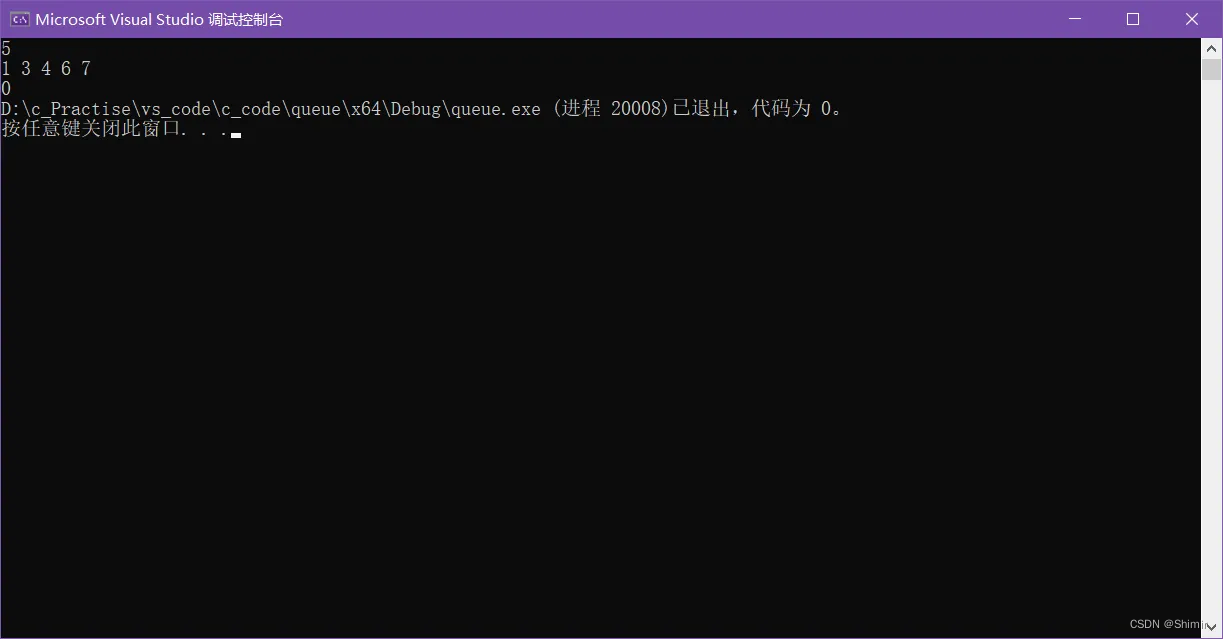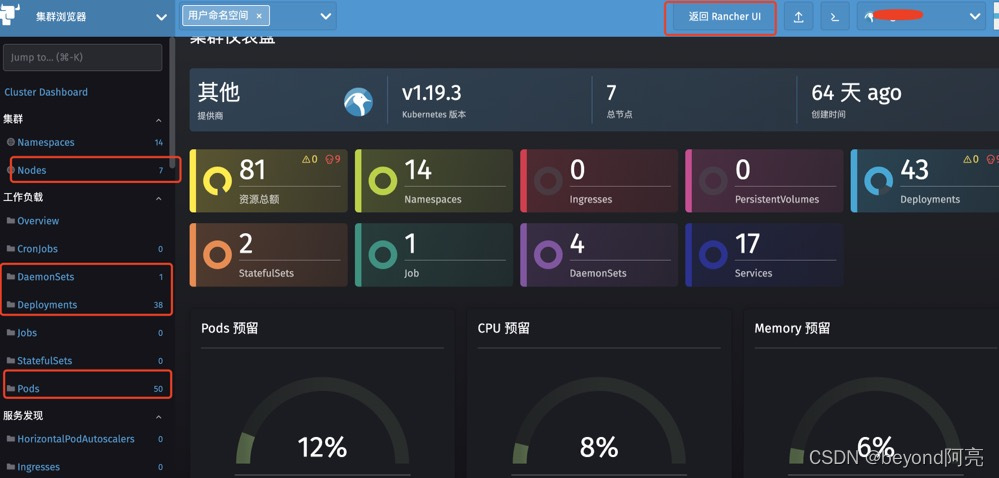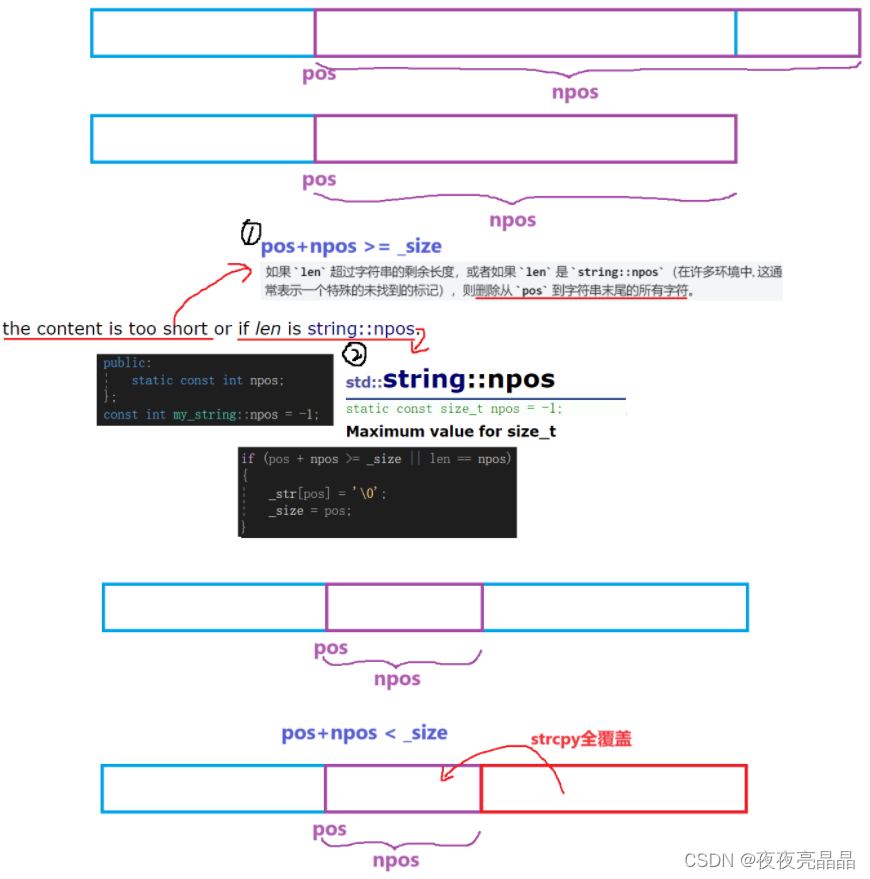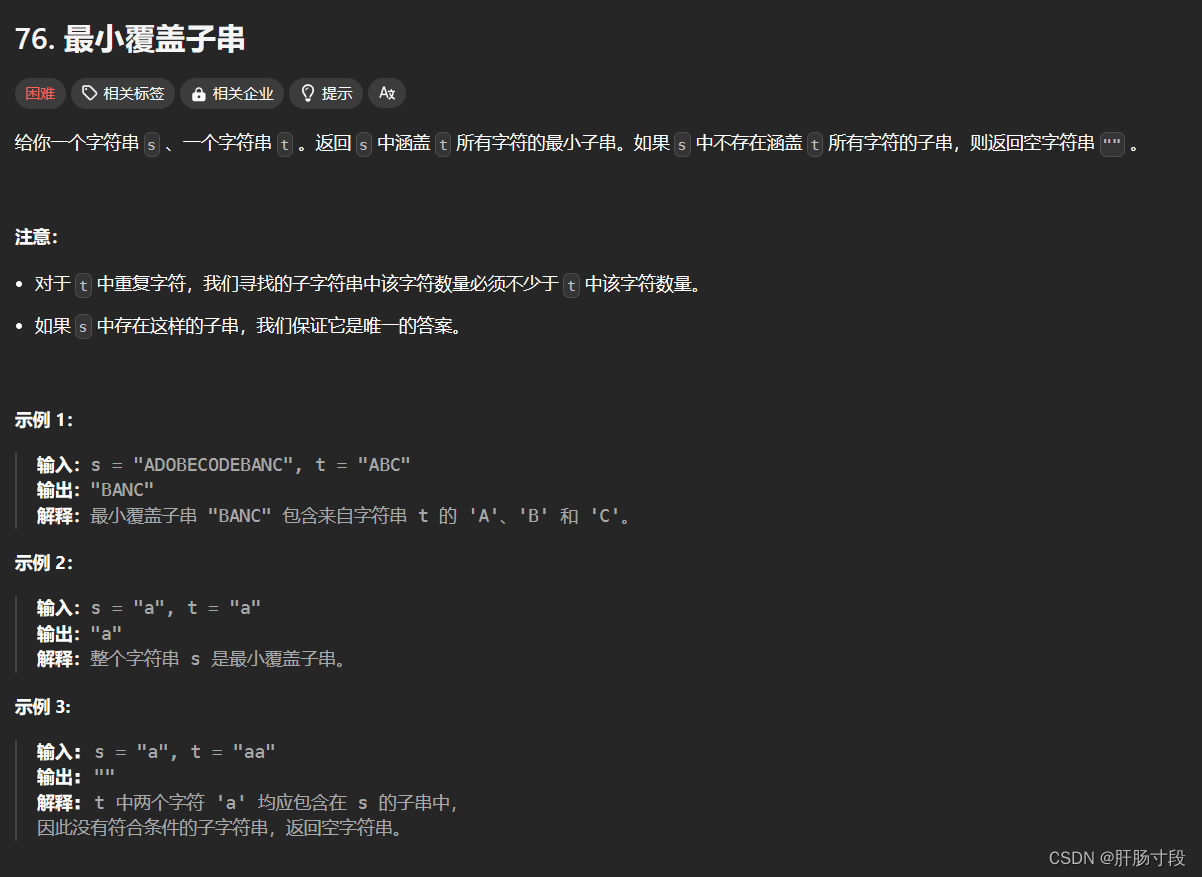一、栈的概念及结构
栈:一种特殊的线性表,其只允许在固定的一端进行插入和删除元素操作。进行数据插入和删除操作的一端称为栈顶,另一端称为栈底。栈中的数据元素遵守后进先出LIFO (Last In First Out)的原则。
压栈:栈的插入操作叫做进栈/压栈/入栈,入数据在栈顶。
出栈:栈的删除操作叫做出栈。出数据也在栈顶。
空栈:不含任何元素的空表。
—后进先出(Last In First Out )原则

二、栈的实现
栈的实现一般可以使用数组或者链表实现,相对而言数组的结构实现更优一些。 因为数组在尾上插入数据的代价比较小。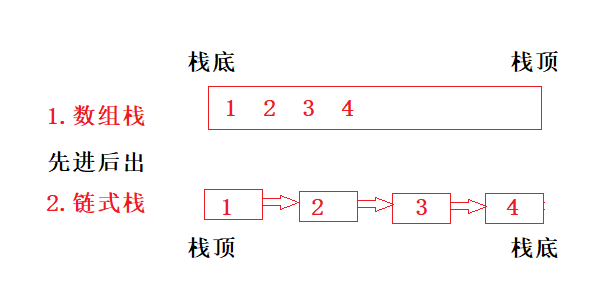
三、栈的顺序存储结构
#pragma once
#include <stdio.h>
#include <assert.h>
#include <stdbool.h>
#include <stdlib.h>
typedef int STDataType;
typedef struct Stack
{
STDataType* a; //
int top; //相当于数组下标,注意栈为空时,top的值应该为?
int capacity;//栈的容量
}ST;
void STInit(ST* pst);
void STDestroy(ST* pst);
//入栈
void STPush(ST* pst,STDataType x);
//出栈
void STPop(ST* pst);
//栈顶元素
STDataType STTop(ST* pst);
//判断栈是否为空
bool STEmpty(ST* pst);
//获取size
int STSize(ST* pst);
#include "stack.h"
void STInit(ST* pst)
{
assert(pst);
pst->a = NULL;
pst->top = 0;//top指向-1,表示栈顶元素数据 0 栈顶数据下一位置
pst->capacity = 0;
}
void STDestroy(ST* pst)
{
assert(pst);
free(pst->a);
pst->a = NULL;
pst->top = pst->capacity = 0;
}
//判断栈是否为空
bool STEmpty(ST* pst)
{
assert(pst);
return pst->top == 0;
}
//入栈
void STPush(ST* pst, STDataType x)
{
if (pst->top == pst->capacity)
{
int newCapacity = pst->capacity == 0 ? 4 : pst->capacity * 2;
STDataType* tmp = realloc(pst->a, newCapacity * sizeof(STDataType));
if (tmp == NULL)
{
perror("realloc fail");
return;
}
pst->a = tmp;
pst->capacity = newCapacity;
}
pst->a[pst->top] = x;
pst->top++;
}
//出栈
void STPop(ST* pst)
{
assert(pst);
assert(!STEmpty(pst));
pst->top--;
}
//栈顶元素
STDataType STTop(ST* pst)
{
assert(pst);
assert(!STEmpty(pst));
return pst->a[pst->top - 1];
}
//获取size
int STSize(ST* pst)
{
assert(pst);
return pst->top;
}
#include "stack.h"
void test1()
{
ST st;
STInit(&st);
STPush(&st, 3);
STPush(&st, 4);
STPush(&st, 5);
printf("%d ", STTop(&st));
STPop(&st);
STPush(&st, 6);
STPush(&st, 16);
while (!STEmpty(&st))
{
printf("%d ", STTop(&st));
STPop(&st);
}
STDestroy(&st);
}
int main()
{
test1();
return 0;
}
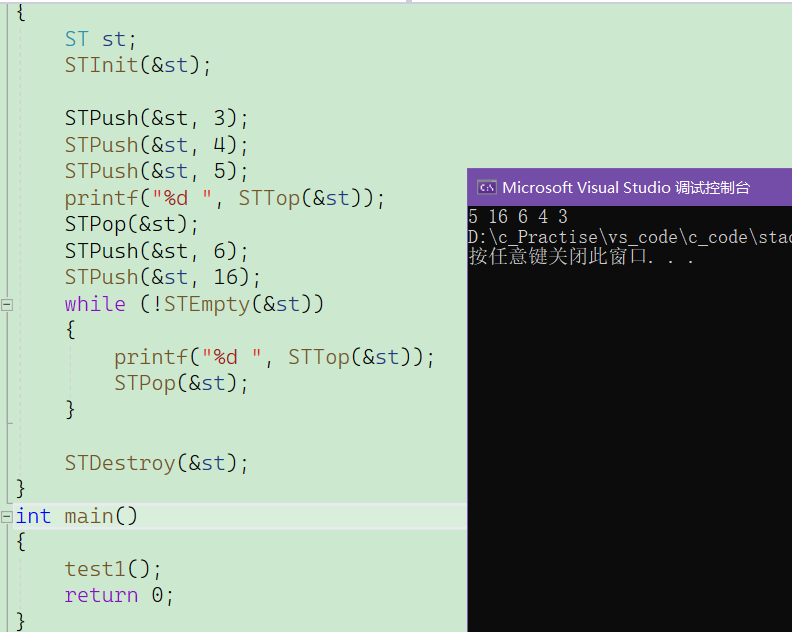
四、队列的概念及结构
队列:只允许在一端进行插入数据操作,在另一端进行删除数据操作的特殊线性表, 队列具有先进先出FIFO(First In First Out)原则。
入队列:进行插入操作的一端称为队尾
出队列:进行删除操作的一端称为队头
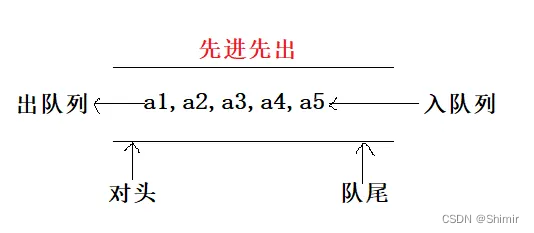
队列也可以数组和链表的结构实现,使用链表的结构实现更优,因为如果使用数组结构,每次元素出队列时都是从数组头出数据,再依次将数组上的元素往前移,效率会比较低。
五、队列的实现

#pragma once
#include <stdio.h>
#include <assert.h>
#include <stdlib.h>
#include <stdbool.h>
typedef int QDataType;
链式结构:表示队列
typedef struct QListNode
{
QDataType data;
struct QListNode* next;
}QNode;
// 队列的结构
typedef struct Queue
{
QNode* front;//方便出数据
QNode* rear;//方便入数据
int size;
}Queue;
// 初始化队列
void QueueInit(Queue* q);
// 队尾入队列
void QueuePush(Queue* q, QDataType x);
// 队头出队列
void QueuePop(Queue* q);
// 获取队列头部元素
QDataType QueueFront(Queue* q);
// 获取队列队尾元素
QDataType QueueBack(Queue* q);
// 获取队列中有效元素个数
int QueueSize(Queue* q);
// 检测队列是否为空
bool QueueEmpty(Queue* q);
// 销毁队列
void QueueDestroy(Queue* q);
#include "queue.h"
// 初始化队列
void QueueInit(Queue* q)
{
assert(q);
q->front = NULL;
q->rear = NULL;
q->size = 0;
}
// 队尾入队列
void QueuePush(Queue* q, QDataType x)
{
assert(q);
QNode* newnode = (QNode*)malloc(sizeof(QNode));
if (newnode == NULL)
{
perror("malloc fail");
return;
}
newnode->data = x;
newnode->next = NULL;
if (q->rear == NULL)
{
assert(q->front == NULL);
q->front = q->rear = newnode;
}
else
{
q->rear->next = newnode;
q->rear = newnode;
}
q->size++;
}
// 队头出队列
void QueuePop(Queue* q)
{
assert(q);
assert(!QueueEmpty(q));//判断队列是否为空
//1.一个结点
//2.多个结点
if(q->front->next == NULL)
{
free(q->front);
q->front = q->rear = NULL;
}
else
{
//头删
QNode* next = q->front->next;//next是局部变量,出作用域就销毁了
free(q->front);
q->front = next;
}
q->size--;
}
// 获取队列头部元素
QDataType QueueFront(Queue* q)
{
assert(q);
return q->front->data;
}
// 获取队列队尾元素
QDataType QueueBack(Queue* q)
{
assert(q);
assert(!QueueEmpty(q));
return q->rear->data;
}
// 获取队列中有效元素个数
int QueueSize(Queue* q)
{
assert(q);
return q->size;
}
// 检测队列是否为空
bool QueueEmpty(Queue* q)
{
assert(q);
return q->front == NULL && q->rear == NULL;
//return q->size == 0;
}
// 销毁队列
void QueueDestroy(Queue* q) {
assert(q);
QNode* cur = q->front;
while (cur)
{
QNode* next = cur->next;
free(cur);
cur = next;
}
q->front = q->rear = NULL;
q->size = 0;
}
#include "queue.h"
void test()
{
QNode* phead = NULL;
QNode* ptail = NULL;
Queue q;
QueueInit(&q);
QueuePush(&q, 1);
QueuePush(&q, 3);
QueuePush(&q, 4);
QueuePush(&q, 6);
QueuePush(&q, 7);
int ret = QueueSize(&q);
printf("%d\n", ret);
while (!QueueEmpty(&q))
{
printf("%d ", QueueFront(&q));
QueuePop(&q);
}
printf("\n");
ret = QueueSize(&q);
printf("%d", ret);
QueueDestroy(&q);
}
int main()
{
test();
return 0;
}
